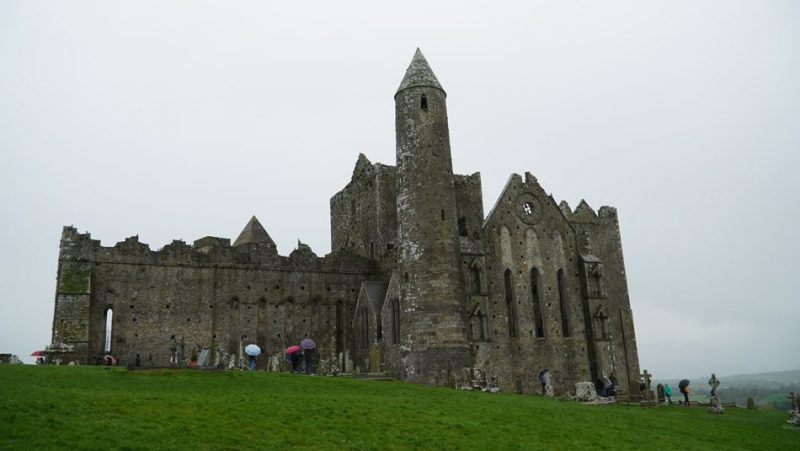This one easily qualifies as being Ireland’s soul and among the most visited sites in the country, sitting on expansive and fertile green farmlands in County Tipperary. The Rock of Cashel is located just 500 meters from the historic town of Cashel in Ireland. The word ‘Cashel’ is a derivative of the Irish ‘Caiseal’ which means a strong fortress. The over 1000-year-old Cashel is an absolute beauty to explore against the idyllic settings of the open farmlands on any clear day in Ireland.
What You Should Know of Rock of Cashel

The Cashel originally belonged to the royalty who ruled the land in the 5th century and continued to be their place of dwelling for the next seven hundred years until they gave it away to be used as a cathedral, or a religious site in the 12th century. Much of what remains today of the Cashel was built much later, in the 12th and 13th centuries. The rocky Cashel stands 200 feet above the ground. It preserves a round tower. Standing from the top of the tower it feels majestic to look down below at the humble green spreads that seem to invite you with their open arms. It’s refreshing and breezy to even look at them.
Legends surround the Cashel, and it is believed the Rock was moved here when St. Patrick, the patron saint of Ireland, banished Satan from a cave. Satan took a bite from the mountains and spat it out at the current location. Irrespective of what stories do the rounds, this is a place of much historic interest.
At least two Irish kings are associated with the Rock — King Aengus (the first Christian ruler of the place) who was baptized here in the fifth century by St. Patrick himself; and Brian Boru who was crowned at the Rock in the tenth century.
The Rock of Cashel preserves some of the timeless collections of Celtic art in all of Europe. The Rock’s largest remaining building is St. Patrick’s Cathedral which was built in the 13th century.
The iconic Round Tower of Cashel is believed to have either been used for defensive purposes by the monks who dwelled inside to protect themselves from raiders or were used as a bell tower. The Cormac’s Chapel is also one of the earliest Romanesque churches in Ireland.
Again, the Rock was supposedly the seat of power of the High Kings of Munster long before the Norman invasion.
Info on Timings and Tickets

It shouldn’t take you more than an hour and a half to explore the premises at the Rock. You must pre-book tickets because the Cashel has a limited number of entries for visitors.
Cormac’s Chapel is by guided tour only. Tour times and details can change at short notice, so it is best to reconfirm on the phone with the officials before paying a visit to the site.
The following are ticket admission rates — Adults — 8 euros; Senior citizens/Group — 6 euros; Children and Students — 4 euros; and Family — 20 euros.
The Rock of Cashel is open to the public every day, but the seasonal timings are from mid-March to mid-October — 9 am to 5:30 pm. The last admission is 45 minutes prior to closing. From mid-October to mid-March it opens from 9 am to 4:30 pm. The additional facilities on the site are an audio-visual show, coach parking, an exhibition of collectibles, a museum, guided tours, and a gift shop.
Address, Phone and How to Reach
Please take note of the address of the Cashel below:
St. Patrick’s Rock of Cashel
Cashel, Co. Tipperary E25 KX44
You can call 062 61437 or write to rockofcashel@opw.ie for queries or help.
You can reach the Rock of Cashel by car, bus, train, bicycle, or by walking depending on the distance from where you are traveling. There’s a public car-park facility close to the site.
You can take the X8 bus to Cashel, and then walk 500 meters from the center of Cashel Town off Dublin Road. The nearest train station is Thurles.

